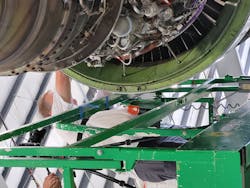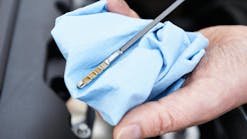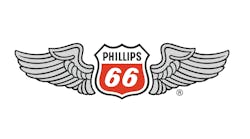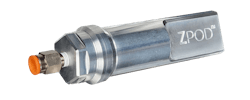Times have really changed in the world of equipment maintenance. The times of getting by with just a hammer, wrench, and screwdriver are long gone. As the tools needed to perform maintenance have progressed one needs to determine if the chemicals, such as lubricants, penetrants, and degreasers have kept pace with the mechanics needs.
In most industrial settings tools and equipment can become caked with oils and greases that need to be removed. The contaminants build up and can quickly impair the performance or damage different types of equipment. Greasy and oily build up needs to be cleaned away to work on or replace equipment components. Tools become hard to handle and inefficient when they are greasy.
An industrial degreaser is an extra strong detergent designed to liquify oil and grease holding contaminants in place and make it easy to remove. It needs to be properly formulated to be strong enough to do the job but still be safe enough to use and comply with environmental regulations. Degreasers are used across industries – automotive, agriculture, aviation, maritime, HVAC, manufacturing, oil and gas, utilities, and more.
To cut through the crud – whether it’s grease, tar, ink, asphalt, oil, or dirt – industrial cleaners and degreasers are essential to maintain industrial sites, machinery, tools, and parts. What properties should be engineered into a premium industrial performance degreaser?
What to Look for in an Industrial Degreaser
· How well does it work? It should dissolve and liquify substances for easy removal from multiple surfaces. It should not damage or leave residue on the surface. The cleaning should be complete with no oily film left behind. It should be applicable to specific needs like removing hydraulic fluid and transmission fluid which tend to be sticky. It needs to be a versatile cleaner for removing tar and asphalt to expose parts that need to be cleaned or removed. For soaking parts, you will need a product with a slow evaporation rate.
· Is it fast acting? A degreaser should work with a minimum amount of soak time to break down the grease for removal. Full removal should be accomplished with minimal physical effort. The pros look for efficacy and speed.
· Is it safe to use? The product label and safety data sheet should give clear direction for proper use including personal protection equipment. The manufacturer should provide easy access to the SDS. There are strict regulations on the amount of volatile organic compounds (VOCs) that a product may contain, be sure that the product is compliant to all local laws and regulations. Research the product to guarantee that it is compatible with material that is being cleaned. Know whether it will damage paint or mar the finish of the component that is being cleaned, prior to use. Information on the flash point and flammability should be readily available. The product should not contain chlorinated or brominated solvents.
· Does it take one or multiple applications to get the job done? The two factors that contribute to the cost of a project are time and money. Getting the job done with one application saves you both. Using less is more efficient. If a degreaser takes 2 to 3 applications, it’s not as cost effective.
· How accessible is it in these days of supply chain issues? Products that are American sourced and made increase the chance that the product will be there when you need it. Look for multiple distributors or outlets to increase product accessibility.
“What we found in laboratory testing was working with different thicknesses and layers of grease,” said Jeffrey Stewart, Kano Laboratories - Technical Sales Engineer, producer of Kano Floway Degreaser, “was we only needed one application of Floway to wipe away grease where it would take 2-3 applications with the competitors’ product. It works fast and it works well.”
Liquid and Aerosol
In liquid form, an industrial degreaser can be brushed on or applied with a rag. It can also be used to soak parts. Soaking works well for parts that are tough to clean and/or have hard to access areas with heavy greasy-oily buildup or carbon deposits.
An aerosol degreaser can be sprayed on and wiped off. It uses a direct stream that can be concentrated on a specific area.
“Ease of application, whether sprayed, soaked, or dipped, are attributes to look for,” said Stewart.
Safety
As with all solvents, use these products in a well-ventilated area and using proper personal protection equipment (PPE). Instructions on the product label should be followed closely. Consult the product safety data sheet (SDS) for product handling and storage.
Mike Fowler is Application Specialist at Kano Laboratories based in Nashville, Tennessee. He conducts distributor training on all Kano products. Fowler has more than 32 years in territory sales management with 16 of those years in industrial chemicals and lubricants.
Jeffrey Stewart is Technical Sales Engineer at Kano Laboratories based in Nashville, Tennessee. He has over 40 years of experience in chemical production and sales. Stewart graduated from the University of Pittsburgh with a BS in Chemical Engineering and obtained a PE license in the state of Ohio.





